CHO Cells in Antibody Production: A Detailed Overview
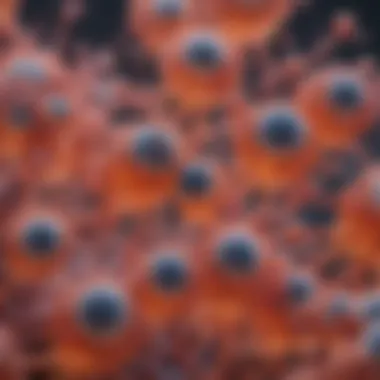

Intro
The production of antibodies is a vital component in the field of biopharmaceuticals. Chinese Hamster Ovary (CHO) cells are integral to this process. Their ability to mimic human glycoproteins makes them a preferred choice among researchers and manufacturers. Understanding CHO cells and their role in antibody production presents opportunities for innovations in medical therapies.
Overview of Research Topic
Brief Background and Context
CHO cells have been used for over four decades in biotechnology. Originally derived from a Chinese hamster’s ovary, these cells have unique characteristics. They can carry out necessary post-translational modifications, such as glycosylation, which is crucial for the functionality of antibodies. This quality ensures that antibodies produced in CHO cells are similar to those found in humans, improving their therapeutic effectiveness.
Importance in Current Scientific Landscape
In today's scientific environment, the demand for biologics continues to rise. As a result, CHO cells have become pivotal. These cells not only support large-scale antibody production but also fulfill regulatory requirements. The significance of CHO cells in therapeutics—such as monoclonal antibodies—cannot be overstated. Studies show that over 70% of therapeutic antibodies available in the market are produced using CHO cells. This remarkable statistic underscores their dominance and efficacy.
“CHO cells are the workhorses of biopharmaceutical manufacturing.”
Methodology
Research Design and Approach
This examination of CHO cells in antibody production relies on a combination of literature review and case studies. Research design focuses on current methodologies and advancements in genetic engineering that enhance CHO cell performance. This encompasses aspects ranging from cell line development to production processes.
Data Collection Techniques
Data for this topic comes from various sources, including academic journals, reports, and industry publications. Both qualitative and quantitative data contribute to a comprehensive understanding of CHO cell mechanics in antibody production. Techniques such as meta-analysis help evaluate the effectiveness of different strategies employed in the use of CHO cells.
With this foundational knowledge established, the subsequent sections will elaborate on the mechanisms of CHO cells in production, the variety of antibodies generated, and future trends that may shape the landscape of biopharmaceuticals.
Preamble to CHO Cells
The exploration of CHO cells is integral to the field of biopharmaceutical manufacturing. Specifically, these cells play a crucial role in the production of therapeutic antibodies, which are increasingly important in treating various diseases. Understanding CHO cells offers insights into their advantages, limitations, and overall significance in antibody production.
Historical Background
CHO cells, derived from the ovarian tissue of the Chinese hamster, were first recognized for their ability to grow in vitro in the 1970s. This breakthrough came at a time when the need for reliable and efficient cell lines for biopharmaceutical production was escalating. Over the years, their genetic makeup has been characterized extensively, illustrating their suitability for producing human-like glycosylation patterns. The adoption of CHO cells became widespread in the 1980s when they were used for the production of recombinant proteins, laying the groundwork for a new era in biotechnology.
Characteristics of CHO Cells
Cell Line Variants
Cell line variants of CHO cells, such as CHO-K1 and CHO-S, offer specific genetic and phenotypic traits that affect antibody production outcomes. These variants are often chosen based on their performance in specific processes. For instance, CHO-K1 is known for its robustness and adaptability to suspension culture, making it a popular choice for large-scale production. Conversely, CHO-S variants are designed for enhanced secretory capabilities, facilitating the efficient release of antibodies into culture media. The unique feature here lies in the genetic modifications, which can be tailored for optimizing yield and functionality of the antibodies produced.
Growth Properties
Growth properties of CHO cells significantly impact their utility in antibody production. These cells can adapt to suspension cultures and serum-free media, which simplifies the production process. Their growth rates are generally favorable, allowing for rapid expansion and high-density cultures. This characteristic is advantageous because it enables higher yields in shorter timeframes, a critical requirement in the pharmaceutical industry. However, the scalability may vary between different CHO cell lines, which necessitates careful consideration when selecting a line based on specific production needs.
Effective growth properties lead to improved efficiencies in biomanufacturing, making CHO cells the preferred choice for many applications.
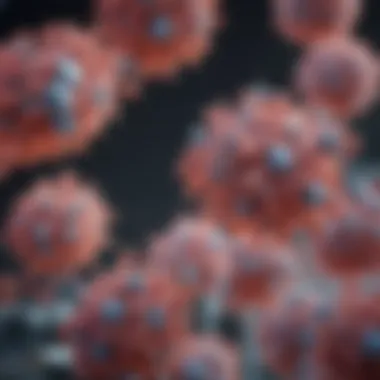
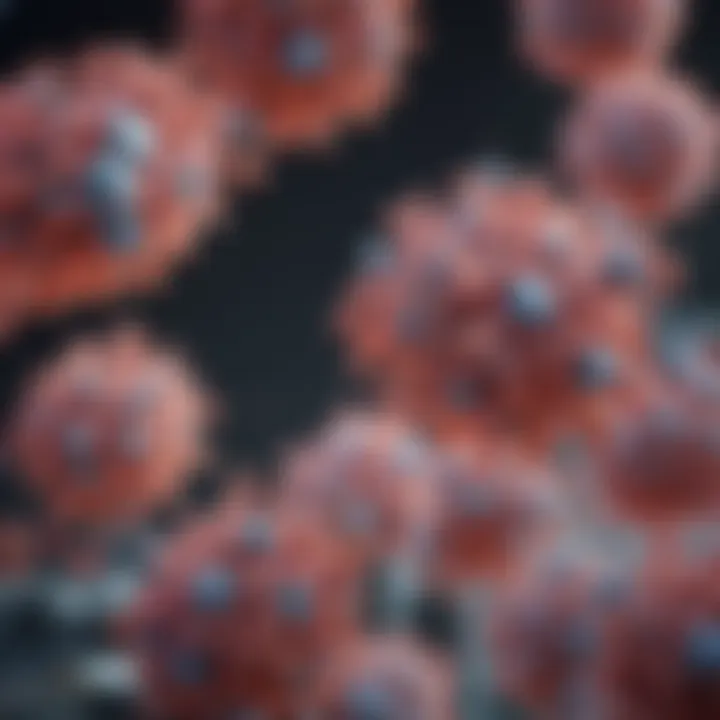
In summary, the historical evolution and essential characteristics of CHO cells provide a foundation for understanding their role in antibody production. These cells present numerous advantages, including scalability and the ability to perform necessary post-translational modifications, critical for producing functional therapeutic antibodies.
Antibody Production Overview
The process of antibody production is a crucial aspect within the field of biotechnology and biopharmaceuticals. In this section, we will explore the types of antibodies generated, their relevance, and the benefits this offers in therapeutic applications. Antibodies play a vital role in diagnosing diseases and are fundamental in the development of treatments for various conditions, including cancer and autoimmune disorders.
Types of Antibodies
Monoclonal Antibodies
Monoclonal antibodies are made from identical immune cells that are clones of a unique parent cell. This means they are homogeneous and specific to a particular target. A key characteristic of monoclonal antibodies is their ability to bind to a single epitope on an antigen, leading to precise targeting in therapies. This specificity is one of the reasons why monoclonal antibodies are a beneficial choice in modern medicine.
The unique feature of monoclonal antibodies is their production process, which involves hybridoma technology. A disadvantage of these antibodies can be their higher cost compared to other types. Despite this, their uniformity and predictability in function make them indispensable in therapeutic settings.
Polyclonal Antibodies
Polyclonal antibodies, in contrast, are derived from different B cell lineages. They recognize multiple epitopes on the same antigen, providing a broader range of binding capabilities. One of the key characteristics of polyclonal antibodies is their versatility. This versatility allows for more robust detection and response to varying pathogen strains, making them popular in diagnostic applications.
A unique feature of polyclonal antibodies is their ease of production. They can be generated more quickly and often at a lower cost compared to monoclonal antibodies. However, their variability in composition can lead to inconsistent results, which is a disadvantage when precision is critical.
Importance in Therapeutics
Antibodies are pivotal in therapeutics. They are used to treat a wide range of diseases due to their specificity and ability to target antigens effectively. Monoclonal antibodies, for instance, are employed in cancer therapies to flag cancer cells for destruction by immune system components. Polyclonal antibodies can also be utilized in treating infections by enhancing the immune response.
The importance of antibodies in therapeutics cannot be understated; they bridge the gap between basic research and clinical application, making them essential for innovative solutions in healthcare.
Mechanism of Antibody Production in CHO Cells
The mechanism of antibody production in CHO cells is crucial to the biopharmaceutical industry, enabling the large-scale generation of therapeutic antibodies. CHO cells serve as a platform for producing proteins that require complex post-translational modifications which mimic human proteins. Understanding the techniques and processes involved can enhance production efficiency and product quality, directly impacting the availability of lifesaving drugs.
Transfection Methods
Transfection methods are essential in the introduction of foreign DNA into CHO cells, enabling them to produce specific antibodies. The choice of transfection method can affect transfection efficiency, stability, and overall yield of the recombinant proteins.
Electroporation
Electroporation is a technique that uses electrical pulses to create temporary pores in the cellular membrane. This allows the uptake of nucleic acids, such as plasmid DNA, into CHO cells. Its key characteristic is the high efficiency of introducing DNA into the cells compared to other methods. This makes electroporation a popular choice in contexts where rapid cell division is not a primary concern.
One unique feature of electroporation is its adaptability to various cell types and conditions. However, it has some disadvantages, such as potential damage to the cells from the electrical current. Proper optimization is necessary to balance cell viability with transfection efficiency, which poses challenges that need to be addressed.
Lipid-Based Transfection
Lipid-based transfection utilizes lipid formulations that encapsulate DNA, facilitating its delivery into cells via endocytosis. This method is favored for its ease of use and minimal cytotoxicity. The key characteristic of lipid-based transfection is its compatibility with a wide range of cell lines, making it versatile.
A unique advantage of lipid-based transfection is the ability to maintain cell health while achieving substantial transfection efficiency. Nonetheless, it sometimes provides lower efficiency compared to electroporation, which can influence selection of method based on specific project requirements.
Post-Translational Modifications
Post-translational modifications are critical in ensuring that the antibodies produced by CHO cells have the appropriate structure and function. These modifications impact biological activity and stability, thus influencing the therapeutic efficacy of the antibodies.
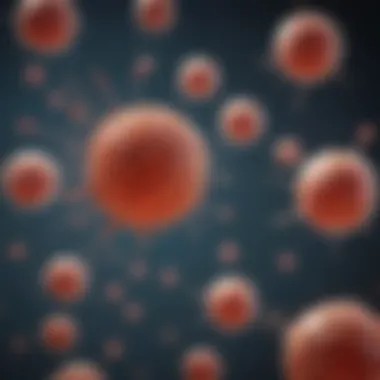
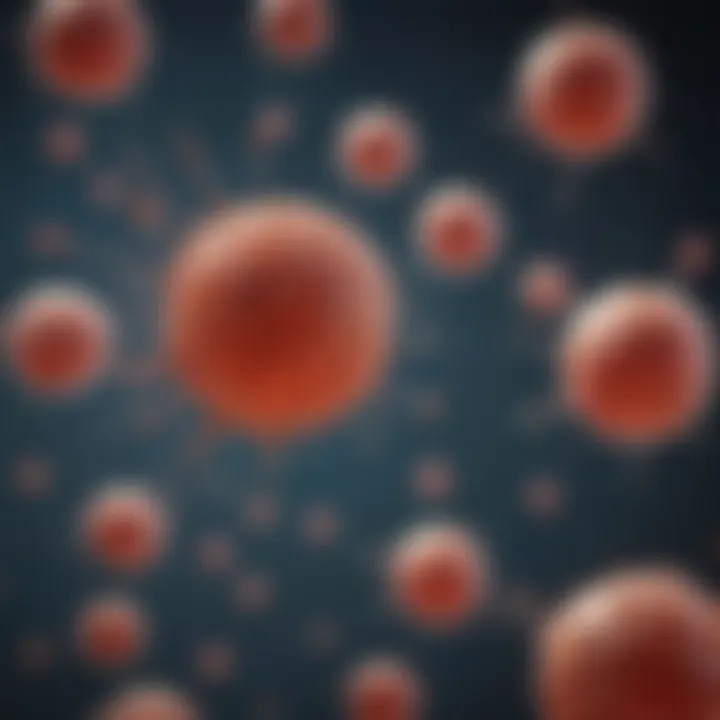
Glycosylation
Glycosylation refers to the addition of carbohydrate chains to proteins and is vital for the functionality of many antibodies. CHO cells are capable of performing human-like glycosylation, which is a significant advantage. The correct glycosylation patterns can enhance the pharmacokinetics and stability of therapeutic antibodies.
The major advantage of glycosylation in CHO cells is its ability to influence the immune response, thereby improving overall therapeutic effectiveness. However, inconsistent glycosylation patterns can lead to variability in therapeutic outcomes, which poses a challenge in manufacturing.
Disulfide Bond Formation
Disulfide bond formation is essential for the structural integrity of antibodies. This post-translational modification occurs naturally in CHO cells and maintains protein stability. The ability to form correct disulfide bonds is crucial for achieving the desired three-dimensional configuration of the antibodies, ensuring their effectiveness.
The unique feature of disulfide bond formation is that it enhances stability during storage and transportation of antibodies. However, incorrect folding or bond formation may lead to loss of function of the final product, underlining the importance of optimizing cell culture conditions to ensure accurate protein folding.
"Understanding transfection and modifications in CHO cells is essential for effective antibody production."
This section has outlined critical aspects of how CHO cells produce antibodies. From transfection methods to post-translational modifications, each element plays a significant role in the efficiency and quality of the final antibody product.
Advantages of CHO Cells in Antibody Production
CHO cells have been the foundation of biopharmaceutical development for decades. Their utilization in antibody production brings several significant advantages. These cells are specifically engineered to produce proteins that closely resemble human proteins. This resemblance is crucial for therapeutic efficacy and safety. Here, we delve deeper into the specific advantages CHO cells offer in the context of antibody production.
Human-Like Glycosylation Patterns
One of the key advantages of CHO cells is their capability to achieve human-like glycosylation patterns. Glycosylation is a vital post-translational modification that affects protein stability, solubility, and biological activity. In biopharmaceuticals, proper glycosylation can influence how the antibodies interact with the immune system.
CHO cells can be manipulated to optimize glycan structures, ensuring higher affinity and effectiveness of the antibodies. Generally, using CHO cells enhances the therapeutic relevance of these proteins. This alignment with human glycosylation is critical as it can lead to reduced immunogenicity, which lowers the risk of adverse reactions in patients. The enhancement in efficacy from tailored glycosylation leads to increased market competitiveness for products developed using these cells.
Scalability and Yield
CHO cells are also recognized for their scalability. Large-scale production is essential in the biopharmaceutical industry to meet market demands. CHO cells can be cultivated under a variety of settings, from small laboratory experiments to extensive manufacturing facilities, without significantly impacting the quality of the output. This adaptability is vital; bioproduction processes often require rapid scale-up and consistent results.
The yield of antibodies from CHO cell cultures is noteworthy. These cells can achieve significant protein production, essential for meeting the high-demand nature of the pharmaceutical market. Higher yields minimize production costs and time. Consequently, manufacturers can provide treatments more efficiently, benefiting both providers and patients.
"The use of CHO cells enables the production of high-quality therapeutics in a cost-effective manner, making them a preferred choice for antibody development."
Challenges in Using CHO Cells
When discussing CHO cells and their pivotal role in antibody production, it is crucial to recognize the challenges associated with their use. While these cells provide numerous advantages, such as human-like glycosylation patterns and scalable production, they also come with their own set of difficulties that can impact the efficiency and quality of the production process.
Understanding these challenges helps researchers and industry professionals develop strategies to overcome them, thereby refining their processes and achieving more consistent results in the field of biopharmaceutical manufacturing.
Cell Line Stability
Cell line stability represents a significant challenge in the use of CHO cells. Over time, CHO cell lines may undergo genetic drift that can alter their properties, leading to variations in cell behavior and performance. This stability is particularly vital when producing therapeutic antibodies that must maintain a precise structure and activity for effectiveness.
The instability can manifest in different forms, such as:
- Genetic alterations: These changes may affect productivity and the profile of post-translational modifications, such as glycosylation.
- Phenotypic changes: Variations in growth rates, viability, and metabolic activity can develop over passages.
- Loss of desired genetic traits: This can hinder the ability to produce high-quality antibodies and may necessitate frequent revalidation of production cells.
Researchers engage in various strategies to enhance cell line stability, including utilizing optimized culture conditions, employing selective pressure, and implementing storage protocols to preserve the characteristics of cell lines during cryopreservation.


Product Quality Variability
Another considerable challenge arises from product quality variability. CHO cells must produce antibodies that meet strict regulatory standards, but inconsistent results can lead to significant issues such as changes in therapeutic efficacy and safety.
Several factors contribute to this variability:
- Culture environment: Variations in nutrient supply, pH, and temperature can lead to discrepancies in antibody production and quality.
- Batch-to-batch differences: Fluctuations in raw material quality or production conditions can introduce inconsistencies between different manufacturing runs.
- Post-translational modifications: These modifications can differ even among identical CHO cell lines, influencing the biological activity of the final product.
To address quality variability, biopharmaceutical companies often implement rigorous quality control measures and adopt process analytical technologies throughout the production stages. Continuous monitoring and optimization of culture conditions are crucial to minimizing variation and ensuring that the antibodies produced are of the highest quality.
"The importance of understanding CHO cell challenges cannot be overstated, as it directly impacts the therapeutic outcomes of produced antibodies, making it critical for successful biopharmaceutical processes."
In summary, while CHO cells are a cornerstone in antibody production, recognizing and addressing the challenges of cell line stability and product quality variability remains integral for continual advancement in biopharmaceutical applications.
Advancements in Genetic Engineering for CHO Cells
The field of genetic engineering has considerably transformed the utilization of CHO cells in antibody production. These advancements not only optimize the production processes but also enhance the characteristics of the antibodies produced. Genetic modifications enable researchers and biotechnologists to improve yield, consistency, and functionality of the antibodies, and thus, these advancements are pivotal in meeting the increasing demands of the biopharmaceutical industry.
CRISPR Technology Applications
CRISPR technology has emerged as a leading tool in genetic engineering. It allows for precise editing of the genome within CHO cells. Using CRISPR, scientists can introduce, delete, or modify specific genes with high efficiency. This targeted approach is advantageous for several reasons:
- Increased Control: Researchers can manipulate specific loci that are critical for improving antibody production.
- Reduced Time and Cost: Traditional methods of gene editing can be time-consuming. CRISPR can streamline this process, saving both time and resources.
- Enhanced Productivity: By deleting or modifying genes associated with production bottlenecks, CRISPR applications can significantly enhance yield.
One example of CRISPR's application is in the modulation of glycosylation pathways in CHO cells. This can lead to the production of antibodies with more favorable pharmacokinetic profiles.
"CRISPR technology presents a transformative opportunity in optimizing CHO cell lines for biopharmaceutical production."
Gene Optimization Techniques
Gene optimization encompasses a range of strategies aimed at enhancing gene expression levels in CHO cells. These techniques are crucial since they dictate how effectively the CHO cells produce the desired proteins. Key approaches include:
- Codon Optimization: This involves modifying the codons used in the gene sequence to match the most abundant codons in CHO cells. This increases the efficiency of translation during protein synthesis.
- Promoter Engineering: Selecting and modifying promoters that control gene expression can lead to higher protein yield. A strong promoter typically increases the transcription, thus enhancing production.
- Transgene Integration: Improving the methods of integrating transgenes into the CHO cell genome can lead to stable expression over time, reducing variability in production.
These optimization strategies ensure that the CHO cells not only grow robustly but also produce antibodies with consistency and desired characteristics. Therefore, advancements in genetic engineering for CHO cells are not just beneficial, but essential in meeting the evolving challenges in antibody production.
Future Perspectives in Antibody Production Using CHO Cells
The field of antibody production using CHO cells is poised for transformative growth. Understanding the future perspectives in this area is essential for researchers and professionals. These insights not only point to potential advancements but also underscore the ongoing relevance of CHO cells in biopharmaceutical processes. Furthermore, they highlight the necessity for adaptive strategies in response to the evolving landscape of medicine and biotechnology.
Emerging Trends in Bioprocessing
As we look ahead, various trends in bioprocessing are emerging that show promise for enhancing antibody production with CHO cells. One significant trend is the integration of continuous manufacturing techniques. This approach aims to shift away from the traditional batch processing model, allowing for increased efficiency, reduced costs, and improved yield.
In addition, there is an increasing focus on process analytical technology (PAT). This technology enables real-time monitoring and control of production processes. Such advancements can help ensure quality and consistency in antibody production. Another noteworthy trend is the application of automation and digital platforms within bioprocessing. By utilizing advanced robotics and AI-driven systems, companies can streamline workflows and enhance precision in cell cultivation and product harvesting.
Potential for Personalized Medicine
The role of CHO cells in personalized medicine represents a noteworthy frontier. As the shift toward personalized therapeutic solutions accelerates, there is a growing demand for tailored antibodies that meet individual patient needs. CHO cells are well-suited for this purpose due to their ability to produce complex glycoproteins similar to those found in humans. This characteristic facilitates the generation of antibodies capable of targeting specific biomarkers in diverse patient populations.
Moreover, the advancements in genetic engineering and CRISPR technology allow for more precise modifications of CHO cells. By optimizing these cells for specific therapeutic applications, researchers can develop more relevant and effective treatments. The convergence of personalized medicine and CHO cell technology not only enhances patient care but also paves the way for novel approaches in drug development.
The future of antibody production using CHO cells is likely to reflect a broader shift towards patient-centric therapies and innovative bioprocessing methodologies.
In summary, the future perspectives of using CHO cells for antibody production are notably promising. Emerging trends in bioprocessing are set to reshape production efficiency and quality. Moreover, the alignment with personalized medicine addresses the rising demand for tailored therapies. These factors collectively indicate a significant evolution in the role of CHO cells in biopharmaceutical manufacturing.



